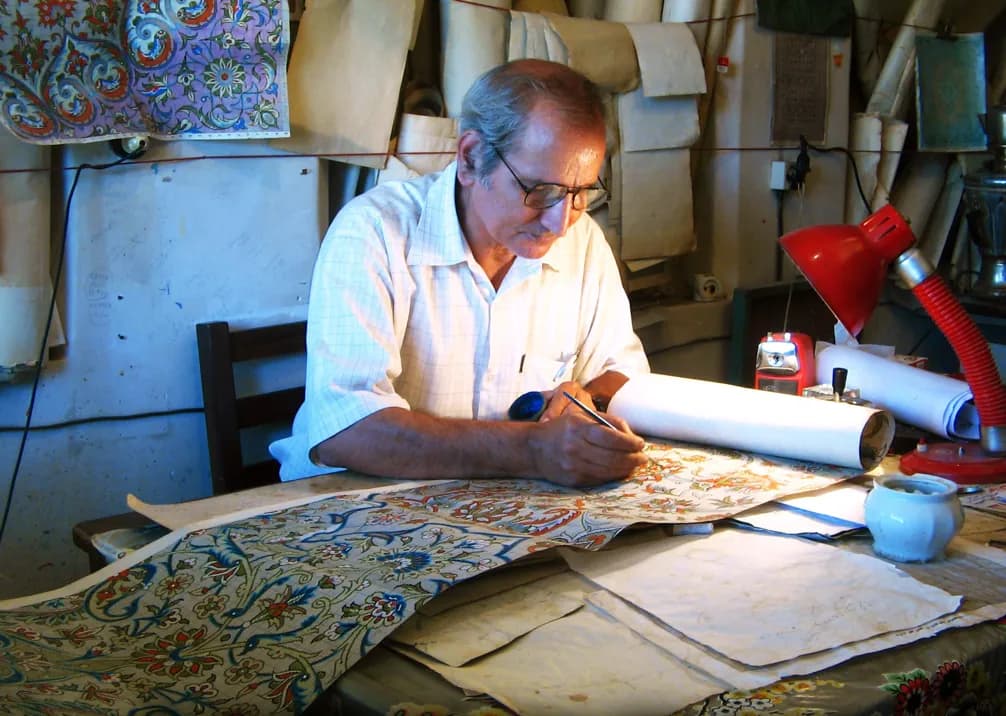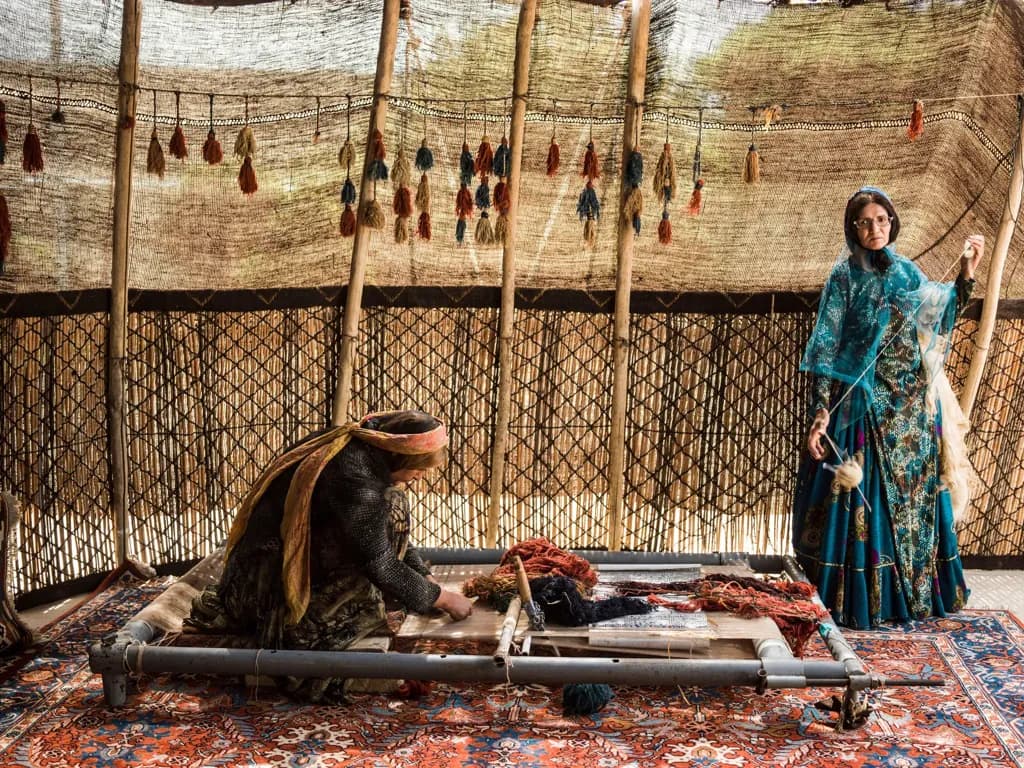Shiraz rugs, emanating from the celebrated city of Shiraz and its surrounding tribal regions, represent one of the most distinctive and cherished carpet-weaving traditions in Iran. As the cultural capital of Fars province, Shiraz's carpet heritage combines sophisticated urban artistry with the bold expressiveness of tribal weaving traditions.
The defining characteristic of Shiraz carpets lies in their remarkable synthesis of nomadic and urban design elements. These rugs typically feature geometric patterns interwoven with stylized floral motifs, creating a unique aesthetic that bridges tribal authenticity and urban refinement. Multiple diamond medallions, a signature element of Shiraz rugs, often dominate the field, accompanied by scattered smaller motifs that create a dynamic visual rhythm.
The color palette of Shiraz rugs is particularly noteworthy for its depth and vibrancy. Deep reds, rich blues, and warm browns form the foundation, while ivory, orange, and green accents create striking contrasts. These colors are achieved through both natural and contemporary dying techniques, with many pieces still utilizing traditional methods that produce the characteristic depth and subtle variations prized by collectors.
The wool used in Shiraz carpets comes primarily from sheep raised in the Zagros Mountains, known for producing particularly lustrous and durable fleece. This high-quality wool, combined with the characteristic weaving techniques of the region, results in carpets with a distinctive soft handle and natural sheen that increases with age.
Technically, Shiraz rugs are woven with a medium to loose knot count, typically ranging from 120 to 200 KPSI (knots per square inch). This relatively looser weave, combined with excellent wool quality, creates pieces with exceptional durability and a pleasantly substantial feel underfoot. The foundation is typically wool, though cotton is also used, particularly in more recent production.
One of the most distinctive features of Shiraz rugs is their end finishing, which often includes colorful kilim ends and occasionally decorative tassels. These elements, along with the characteristic thick pile, contribute to their authentic tribal appearance while providing additional structural stability.
The sizing of Shiraz rugs tends to be varied, reflecting both nomadic traditions and urban market demands. While smaller and medium-sized rugs are most common, larger room sizes are also produced. Each size category maintains the distinctive Shiraz characteristics of bold design and robust construction.
Modern Shiraz production continues to honor traditional methods while adapting to contemporary tastes. The rugs maintain their characteristic bold patterns and strong colors but often feature subtle modifications that make them particularly suitable for modern interiors. This evolution has helped maintain their popularity among both collectors and interior designers.
The investment value of Shiraz carpets is enhanced by their reputation for durability and their strong connection to authentic Persian weaving traditions. Each piece represents not just a decorative element but a tangible link to one of Iran's most historically significant weaving traditions.
These rugs are particularly valued for their versatility in both traditional and contemporary settings. Their bold geometric patterns and rich colors can serve as dramatic focal points in modern interiors, while their traditional motifs allow them to harmonize beautifully with classical décor.
Each Shiraz rug tells a story of cultural synthesis, where the sophistication of urban design meets the bold expressiveness of tribal traditions, creating pieces that continue to captivate collectors and enthusiasts worldwide.













